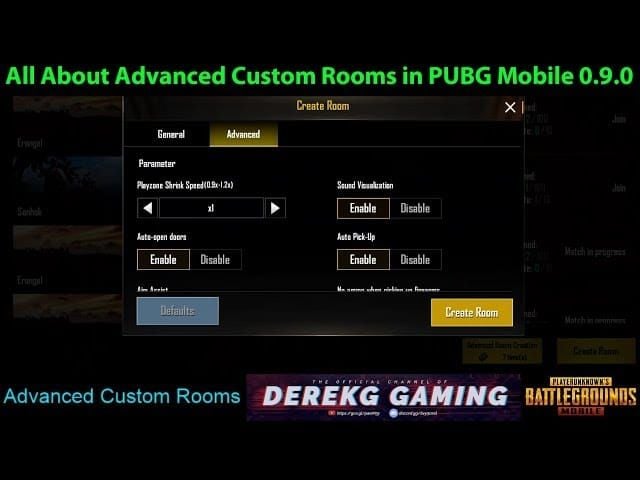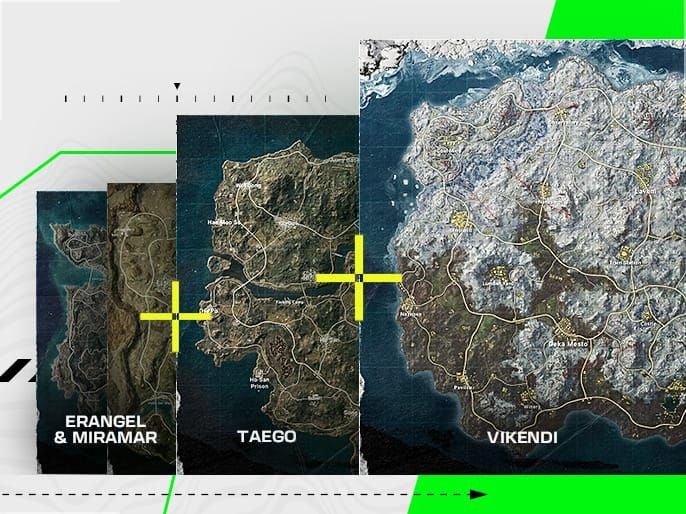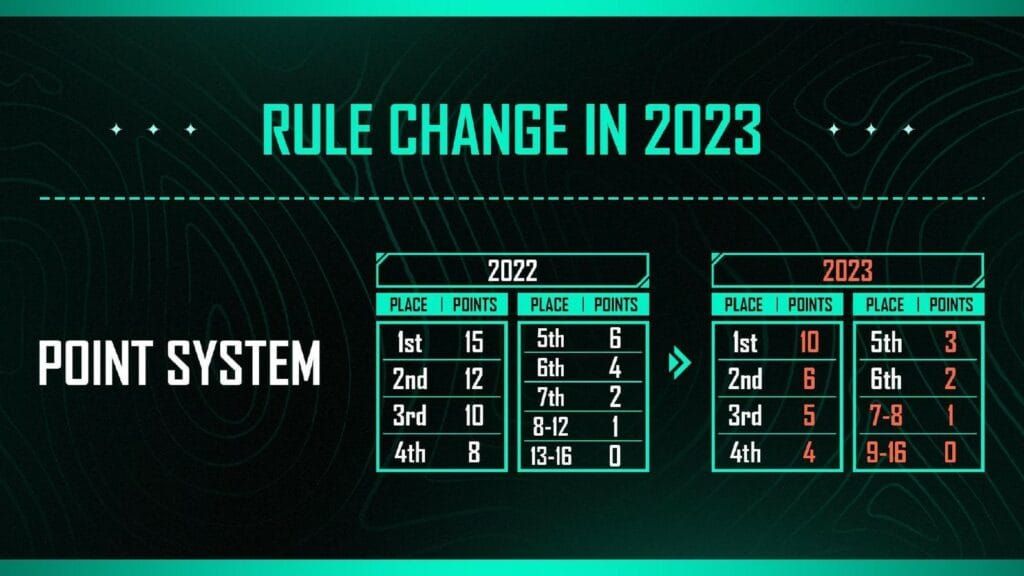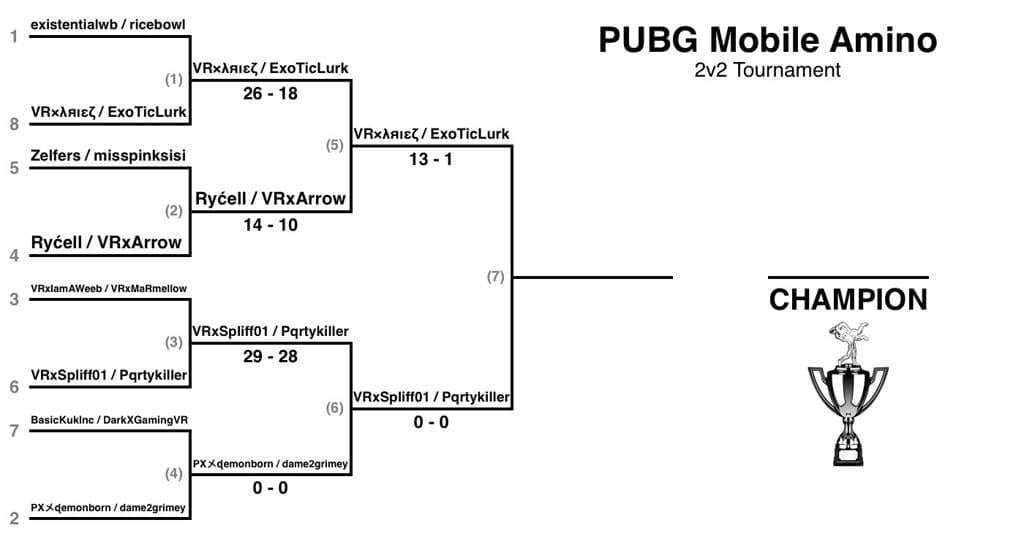What Are PUBG Mobile Custom Room Scrims 4.1?
The Basics (And Why They Matter)
Here's the thing about custom room scrims — they're unranked practice matches designed specifically for competitive skill development. No rank penalties. No stress about dropping tiers. Just pure, focused improvement.
Think of scrims as your training ground for everything that matters: equipment familiarity, tactical knowledge, team coordination, and those crucial strategic movements that separate Gold-tier players from the rest. The best part? Custom rooms eliminate those pesky bots you'll find cluttering lower-tier ranked matches. You get authentic competitive experiences every single time.

The benefits stack up quickly. Risk-free skill improvement, enhanced team survival strategies, dynamic movement practice for dodging enemies, and — this one's huge — patience development to avoid those risky engagements that get teams eliminated early. For competitive players who need consistent practice environments, purchase PUBG UC for custom rooms through BitTopup's secure platform. They offer competitive pricing and instant delivery, so your scrim sessions never get interrupted.
What's New in the Updated System
The latest custom room system? It's a game-changer for tournament simulation.
Room creators now have granular control over playzone mechanics — adjust shrink speed from 0.9x to 1.2x, modify safe zone diameter to 0.8x, and set safe zone start times anywhere from 0-420 seconds. Want to intensify those late-game scenarios? Crank playzone damage up to 2x and watch teams scramble.

Audio and pickup customizations level the competitive playing field through adjustable sound visualization (those footstep and gunshot markers on your minimap), configurable auto-pickup settings, and auto-door opening controls. But here's where it gets really interesting — weapon and attachment spawn rates are fully customizable with 0x to 3x multipliers across every category. Sniper rifles, assault rifles, shotguns, SMGs, attachments — you control it all.
Why This Gives You a Competitive Edge
Advanced room settings unlock tournament-grade practice through Vague Information mode. This clever feature hides usernames in elimination broadcasts, showing generic identifiers like Team1Player1 instead. No more stream sniping worries.
The spectator client provides broadcast capabilities with live match data API integration — real-time statistics tracking during competitive events becomes effortless. Equipment spawn rate adjustments let organizers create perfectly balanced practice environments. Bump AR spawn rates to 2x for mid-range engagement training, or reduce sniper rifle spawns to 0.5x to emphasize close-quarters combat skills. These configurations help teams prepare for specific tournament formats and map strategies with laser precision.
Setting Up Your Ruleset Configuration
Building Your Rule Framework
Professional scrim rulesets aren't just suggestions — they're the foundation of fair competition.
All tournament decisions by administration are final. Teams agree to PUBG Mobile Terms of Service compliance, period. Violations trigger progressive penalties: warnings, point deductions, disqualification, or permanent bans. We maintain zero tolerance for offensive language targeting race, orientation, gender, citizenship, or religion.
Prohibited behaviors include collusion (teaming, prize splitting, information sharing), cheating through third-party modifications, bug exploitation, smurfing, and intentional disconnections. Team composition requires 4 active players plus 1 reserve, with rosters locked before event confirmation. No exceptions.
Map Rotation That Makes Sense
Standard competitive formats stick to classic TPP battle royale mode with 16 teams of 4 players each.
Primary map rotation hits the essentials: Erangel for open-field strategy development, Miramar for long-range engagement practice, and Sanhok for fast-paced close-quarters combat training. Vikendi gets reserved for finals and special tournament phases — it's that good.

Lobby preparation allows 10 minutes before match start. Teams must join within this timeframe or proceed short-handed. Map-specific strategies demand different equipment priorities. Erangel emphasizes vehicle rotation and compound control. Miramar demands long-range weapon proficiency. Sanhok rewards aggressive early-game rotations. Know your maps, know your strategy.
Equipment and Weapon Guidelines
Mobile devices only — emulators are banned for competitive integrity. Latest game version installation is mandatory for compatibility and security.
Standard tournament configurations maintain default spawn rates (1x) for balanced gameplay, while training sessions may increase specific weapon categories to focus on particular skills. Advanced equipment settings allow backpack, helmet, and armor spawn rate modifications to simulate different survival scenarios. Reduced equipment spawns create high-stakes environments where resource management becomes critical. Increased spawns focus purely on combat mechanics.
Mastering the Point System
How Kill Points Work
The standardized point system awards 1 point per elimination across all competitive formats. Simple, consistent, fair.
This scoring mechanism ensures balanced competition regardless of individual playstyles or team strategies. Elimination tracking includes both individual and team statistics for comprehensive performance analysis. Teams benefit from coordinated elimination strategies — multiple players can contribute to the same engagement for maximum point generation. For teams requiring consistent UC access for extended scrim sessions, top up PUBG UC for scrims via BitTopup's streamlined platform with instant UC delivery and competitive exchange rates.
Placement Points Breakdown
Placement points follow established tournament standards with significant rewards for top finishes.
The distribution: 20 points for 1st place, 14 for 2nd, 10 for 3rd, 8 for 4th, 7 for 5th, 6 for 6th, 5 for 7th, 4 for 8th, 3 for 9th, 2 for 10th, and 1 point for positions 11th through 16th. This structure emphasizes survival and strategic positioning while maintaining incentives for aggressive play through kill points.

Alternative scoring systems like PMGC 2025 format use modified placement points: 10 for 1st, 6 for 2nd, 5 for 3rd, 4 for 4th, 3 for 5th, 2 for 6th, 1 for 7th-8th, and 0 for 9th-16th positions. Choose based on your tournament's competitive philosophy.
Calculating Final Scores
Final scores combine placement points and elimination points for comprehensive team rankings.
In multi-match formats, teams typically play 15 matches with the top 10 scores counting toward final standings. This system reduces the impact of single poor performances while rewarding consistent excellence. Smart design.
Tiebreaker mechanisms follow a specific hierarchy: total eliminations across all matches, highest single-match point total, highest single-match elimination count, eliminations in the final match, and final match placement. This comprehensive system ensures fair rankings even in closely contested competitions.
Esports Arena Integration Made Simple
Getting Started
The streamlined third-party tournament system simplifies event organization through a three-step application process.
Organizers submit event details to receive either simplified or comprehensive forms based on prize pool size and tournament format. Approval typically occurs within 1-3 days, followed by Room Card distribution for custom game creation. Pretty straightforward.
Eligible tournament formats include community scrimmages, campus competitions, online events, in-person tournaments, team-building matches, and fan showmatches. Post-approval benefits include Room Card access for unlimited custom games, anti-cheat assistance, spectator client access for broadcasting, and live match data API integration.
Team Management Features
Team registration requires 4 fixed members plus 1 reserve, with no substitutions allowed during preliminary phases.
Players must register on designated platforms with activated in-game nicknames and commit to tournament completion or face prize forfeiture. Nationality verification may be required for regional competitions through official identification documents. Roster management includes captain designation for Discord communication, reserve player substitution through official websites, and emergency temporary substitute protocols for less than 30% of total matches.
Advanced team features include automated voice channel creation, team database management, leaderboard tracking, and comprehensive statistics compilation. Everything you need to run a professional operation.
Broadcasting Setup
Professional broadcasting capabilities include spectator client access with real-time match data integration.
The Vague Information setting hides player usernames in elimination feeds, displaying generic identifiers like Team1Player1 to prevent stream sniping and maintain competitive integrity. Live match data API provides real-time statistics for broadcast overlays, including elimination counts, zone positioning, equipment status, and team health information.
Broadcasting restrictions limit streaming rights to approved organizers, ensuring consistent quality and preventing unauthorized content distribution.
Professional Tournament Formats That Work
Single Elimination Brackets
Single elimination tournaments provide clear progression paths with immediate consequences for poor performance.
Teams advance through bracket stages based on cumulative points across predetermined match counts, typically 3-6 matches per bracket stage. Bracket seeding utilizes previous tournament performance, regional rankings, or qualification scores to ensure balanced competition. Higher-seeded teams may receive advantages such as map selection priority or favorable bracket positioning, creating incentives for consistent competitive participation.
This format works effectively for smaller participant pools or time-constrained events.
Round Robin Systems
Round robin formats ensure all teams compete against each other, providing comprehensive skill assessment and fair ranking determination.
This system works best for 8-16 team tournaments where schedule flexibility allows extended competition periods. Point accumulation across all matches determines final rankings, with tiebreaker systems resolving equal scores. The format minimizes luck factors and emphasizes consistent performance across diverse opponents and map rotations.
Teams face varied strategic challenges that test adaptability and comprehensive skill sets.
Swiss Format Implementation
Swiss format tournaments pair teams with similar records each round, creating increasingly competitive matches as events progress.
Teams with winning records face other successful teams, while struggling teams compete against similarly positioned opponents for improved placement opportunities. This format accommodates larger participant pools while maintaining reasonable match counts per team. Typically, 5-7 Swiss rounds provide sufficient data for accurate final rankings without excessive time commitments.
Real Tournament Examples
The PMGC 2025 format demonstrates professional tournament organization with multiple stages.
The Gauntlet phase (November 24-26) features 16 teams in 18 matches, with top 7 advancing to Grand Finals. Group Stage (November 28-30 and December 2-4) divides 32 teams into two groups for 18 matches each, advancing top 3 per group. Last Chance qualification (December 6-7) provides final advancement opportunities for 16 teams through 12 matches, with top 2 reaching Grand Finals.

The Grand Finals (December 12-14) culminate with 16 teams in 18 matches plus Smash Rule implementation for decisive conclusions.
Advanced Scrim Management
Anti-Cheat Measures
Comprehensive anti-cheat measures include prohibition of third-party software altering game content such as crosshairs, interface modifications, sound effects, speed adjustments, or screen overlays.
Violations result in immediate team disqualification, prize forfeiture, and individual player bans from future events. Account verification processes require registered platform accounts with activated in-game nicknames. Mismatched account information results in player removal or team point resets.
Fixed squad compositions prevent mid-tournament roster manipulation and maintain competitive integrity.
Performance Tracking
Advanced statistics tracking includes individual and team performance metrics across multiple categories.
Kill/death ratios, average placement, damage dealt, survival time, and zone positioning data provide comprehensive performance analysis for improvement identification. Automated data collection through API integration eliminates manual tracking errors while providing real-time performance updates.
Performance benchmarking against professional teams and regional averages helps identify improvement areas and competitive positioning.
Fair Play Enforcement
Protest mechanisms allow teams to report violations within 20 minutes of match completion through official websites with supporting evidence.
Administrative review processes handle complaints confidentially without public disclosure unless consent is provided. Match rescheduling options accommodate technical difficulties through Discord or website coordination. Penalty structures include progressive enforcement from warnings through point deductions to disqualification and permanent bans.
Common Mistakes (And How to Avoid Them)
Ruleset Configuration Errors
Incorrect room settings frequently compromise competitive integrity through improper spawn rate configurations or zone timing adjustments.
Default settings (1x spawn rates, standard zone timing) provide balanced competitive environments, while modifications should serve specific training purposes with clear objectives. Map rotation errors include inappropriate map selection for tournament phases or inadequate preparation time between matches.
Standard 10-minute lobby periods allow sufficient preparation, while map-specific strategies require dedicated practice sessions before competitive implementation.
Point System Miscalculations
Manual scoring errors occur when organizers fail to implement automated calculation systems.
Official tournament platforms provide built-in scoring mechanisms that eliminate human error while ensuring consistent point application across all matches and participants. Tiebreaker confusion arises from incomplete rule specification before tournament commencement.
Clear tiebreaker hierarchies must be established and communicated to all participants, with transparent calculation methods and accessible results databases.
Technical Setup Issues
Room Card acquisition problems stem from insufficient Elite Royale Pass progression or inadequate Clan Point accumulation.
Level 14 provides 1-Day cards, Level 37 offers 3-Day access, and Level 85 grants 7-Day cards. Alternative acquisition through Clan Shop requires 300 points for single-use cards. Device compatibility issues arise from emulator usage or outdated game versions.
Mobile device requirements and latest version installation ensure consistent competitive environments across all participants.
Success Stories: Tournaments That Got It Right
PMGC Format Analysis
The PMGC 2025 tournament structure demonstrates effective multi-stage competition design with progressive elimination and skill-based advancement.
The Gauntlet phase efficiently reduces 16 teams to 7 finalists through 18 matches, while Group Stage accommodates larger participant pools through parallel competition tracks. Smash Rule implementation in Grand Finals prevents indefinite competition through Match Point mechanics.
Teams reaching Match Point compete for victory through Chicken Dinner achievements, with maximum 6 additional matches ensuring timely conclusions. Prize pool distribution ($3 million USD) provides substantial incentives across multiple placement tiers.
Regional Championship Examples
PMSC Championship structure demonstrates effective qualification systems through online preliminaries and semi-finals.
Teams advance based on top 10 performance across 15 qualification matches, with regional quotas (40 teams per region, 60 for Asia) ensuring global representation. Fan requirement implementation (1,000+ followers for one team member) connects competitive achievement with community building, encouraging content creation and audience development alongside competitive skill improvement.
Registration verification processes prevent fraudulent participation while maintaining accessibility.
Community Tournament Success Stories
GameSee sponsored PUBG Scrims Season 1 exemplifies successful community-scale competition with 50 INR daily prize pools and structured scheduling.
Daily Discord registration at 1 PM with matches from 7:30-8:30 PM provides consistent competitive opportunities for developing players. The month-long format (June 1-30) allows sustained engagement and skill development tracking across extended periods.
Community-driven organization demonstrates grassroots tournament viability with minimal resource requirements while building local gaming communities.
Essential Tools and Resources
Management Software You Need
PUBG Scrims Discord bot automates tournament administration through comprehensive feature sets including scrims databases, team voice channel management, leaderboard tracking, and team database maintenance.
The /help command provides complete feature access for efficient tournament coordination. Official tournament platforms provide streamlined application processes, automated Room Card distribution, and integrated anti-cheat systems. Multi-language support accommodates global organizers while reducing administrative complexity for community events.
Communication Platforms
Discord integration provides essential communication infrastructure through automated channel creation, role management, and notification systems.
Captain-designated communication channels ensure clear administrative contact while maintaining organized team coordination. Official email support (PUBGMOBILE_ESPORT@tencentgames.com) handles complex queries regarding tournament approval, Room Card distribution, and rule clarification.
Response times typically range from 24-72 hours for comprehensive issue resolution.
Broadcasting Solutions
Spectator client access enables professional-quality tournament broadcasts with real-time match data integration.
Live statistics feeds provide viewer engagement through elimination tracking, zone positioning, and team performance metrics. API integration capabilities allow custom broadcast overlay development for unique tournament branding and enhanced viewer experiences.
Promotional support through official social media channels amplifies tournament visibility and participant recognition.
FAQ
How do I get Room Cards for custom scrims? Room Cards come through Elite Royale Pass progression (Level 14: 1-Day, Level 37: 3-Day, Level 85: 7-Day) or Clan Shop purchase (300 Clan Points for single-use).
What's the best point system for competitive scrims? Standard tournament scoring awards 20 points for 1st place down to 1 point for 11th-16th place, plus 1 point per elimination. PMGC format uses compressed placement points with identical elimination scoring.
How long does tournament approval take? Official tournament applications get approved within 1-3 days through the streamlined third-party system.
Can I use emulators for competitive scrims? Nope — mobile devices only for competitive integrity. Latest game version installation is mandatory.
What maps are used in professional tournaments? Standard rotation includes Erangel, Miramar, and Sanhok for qualifiers, with Vikendi added for finals. Classic TPP battle royale mode with 16 teams of 4 players each is the competitive standard.
How do tiebreakers work in scrim tournaments? Tiebreaker hierarchy: total eliminations across matches, highest single-match points, highest single-match eliminations, eliminations in final match, and final match placement.


















